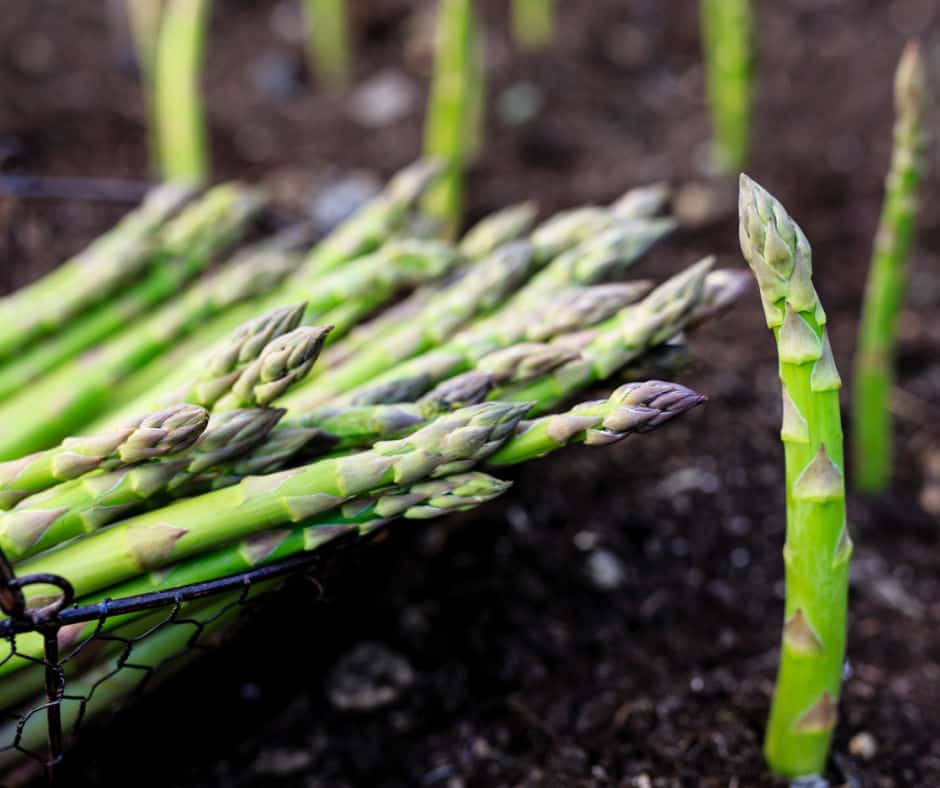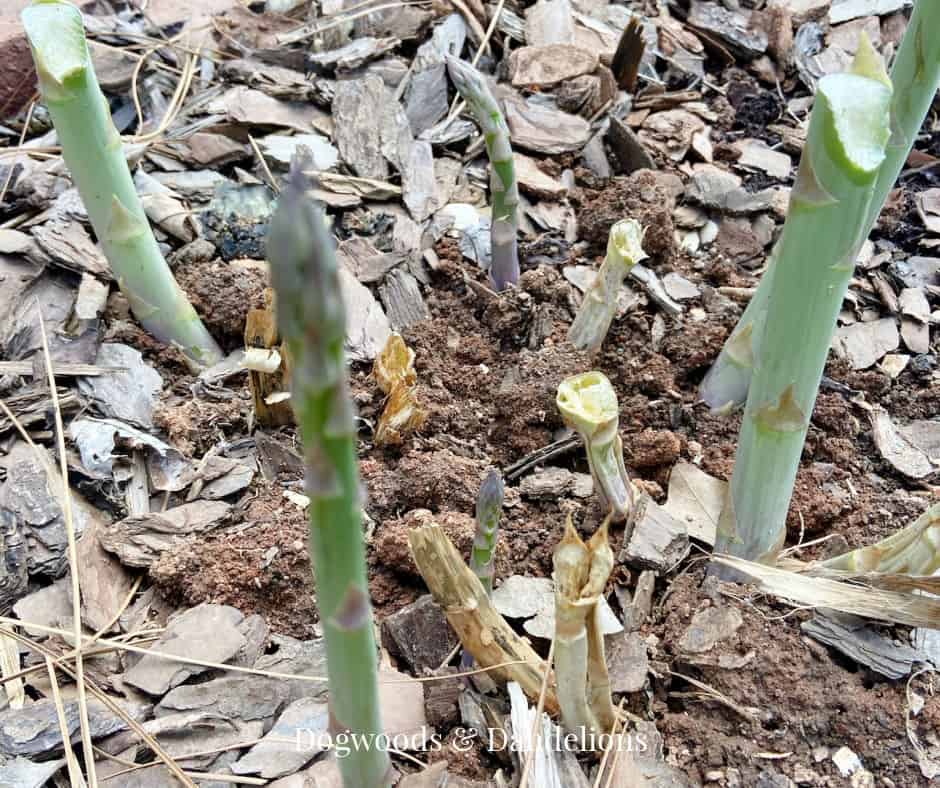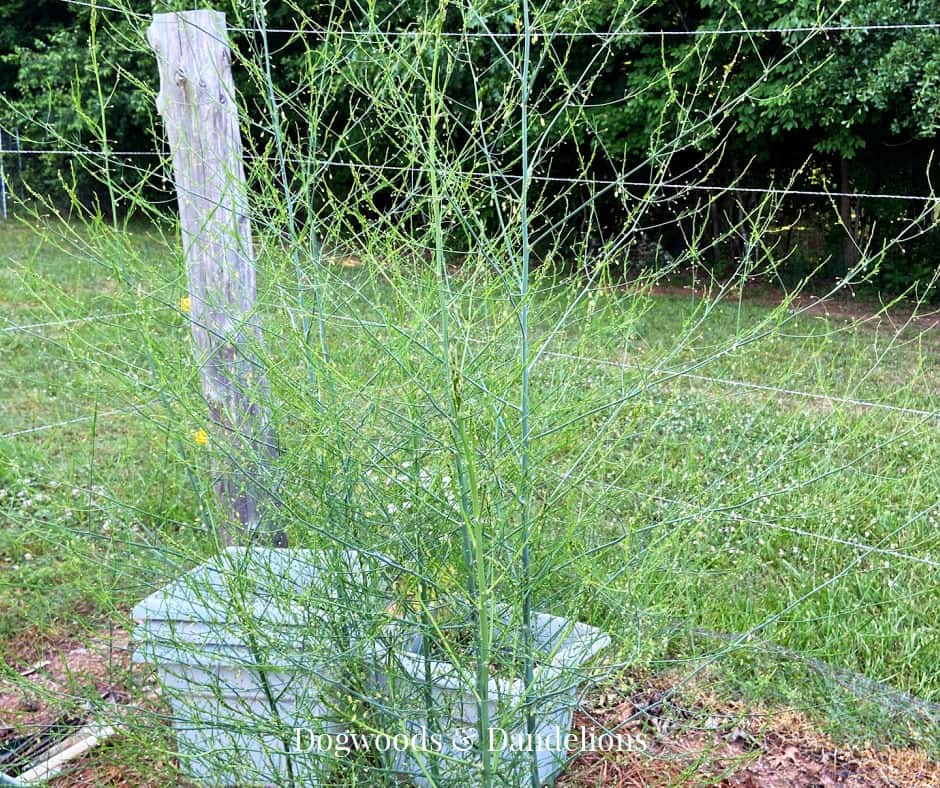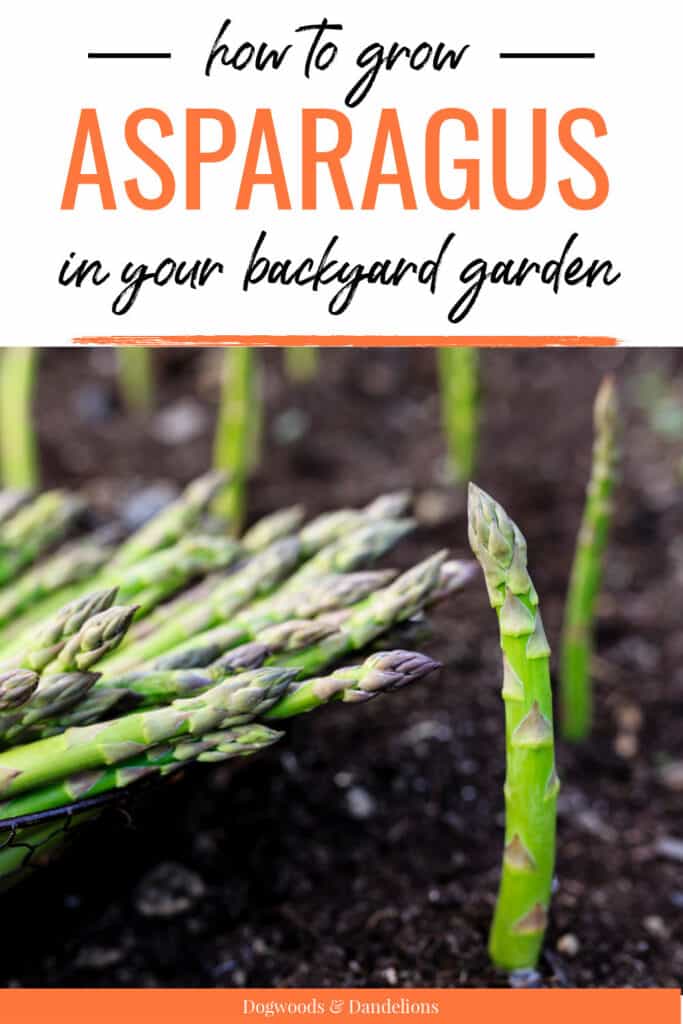How to Grow Asparagus
Learning how to grow asparagus is definitely worth the trouble as the delicious spears will provide a harvest for many years to come. Asparagus is a perennial so if you plant it once it will return every year.
But since asparagus is a perennial, you must plant it somewhere it can remain for years to come. And asparagus needs to be planted and grown the right way to ensure success. Learn how to grow asparagus and some recommended varieties in this post.

Affiliate Disclosure: Please note that some of the links in this article may be affiliate links and I may receive a small commission if you purchase something through a link. It will not change your cost. As an Amazon Associate, I earn from qualifying purchases. For more information, see my disclosures page.)
How to Choose a Planting Location for Your Asparagus Bed
When choosing a location for your asparagus bed, choose carefully. Remember, asparagus is a perennial and can live over 20 years.
Asparagus needs well-drained soil. Standing water will cause the roots to rot. It will also do best planted in full sun, but it can tolerate a bit of shade, especially during the hot summer months.
Asparagus is usually sold bare root. The pieces are actually called crowns.
Plants (crowns) come as male or female. The male plants are generally more productive and there are varieties that are all male which will give you a larger harvest in a smaller area.
When purchasing asparagus, try to find 1-year-old crowns. This will give you a head start on harvesting sooner.
You aren’t supposed to harvest asparagus until year 3 as the plants need time to establish a healthy root system.
How to Plant Asparagus Crowns
To plant asparagus, did a trench 12 inches wide by 6 inches deep in your bed. Plant your asparagus crowns 12 to 18 inches apart in the trench. Space your rows 4 to 5 feet apart.
Top the asparagus crowns with 2 to 3 inches of soil. Don’t fill in the entire trench yet.
After about 2 weeks, add another 1 to 2 inches of soil on top of the crowns. Continue filling in the trench until it is level with the existing soil.
Mulch your asparagus well to prevent weeds that will compete with the growing asparagus. Suitable mulches include straw, pine bark mulch, or shredded leaves.
Weeds will reduce your harvest significantly as they compete with the nutrients in the soil that the asparagus needs.
Fertilize asparagus in the spring and then again in the fall with aged compost or a general vegetable garden fertilizer.

How to Grow Asparagus From Seed
If you want to grow asparagus from seed, prepare to be patient. First, it is slow to germinate, often taking 2 to 6 weeks.
About 12 to 14 weeks before your last spring frost, soak asparagus seed overnight. Plant 1/2 inch deep in warm soil (70-80 degrees) indoors. Keep the seedlings indoors as they grow. You will definitely need a grow light.
Looking for a new grow light? See the grow lights I recommend here.
Once the plants are established and your last spring frost date has passed, plant the transplants outdoors.
How to Harvest Asparagus

When you plant asparagus, you need to allow it to grow for 3 years before harvesting any spears. If you start with one-year-old crowns, then you only have to wait two years before harvesting.
Once your asparagus is in year 3, it needs to be harvested frequently. By frequently I mean every other day. It grows quickly, especially in warm weather, and can become tough in a day or two.
If you find the head of the asparagus is opening, harvest immediately. Once the heads start opening, asparagus quickly becomes tough.
After harvesting, you will need to allow some spears to grow into ferns. Allow the ferns to grow all summer and into the fall. Once the foliage turns yellow and dies back, cut it to the ground. Depending on your climate this could be in the fall or late winter. Be sure to cut it back before new spears start appearing.

Recommended Varieties
When choosing varieties of asparagus, I highly recommend choosing all-male varieties. You will have a much larger harvest.
Some good choices include Jersey Knight and Jersey Giant. Purple Passion is a good choice for a purple variety.
Related Posts
- How to Grow Broccoli
- Learn the difference between cool season and warm season vegetables
- Wondering what you should grow in your garden? Learn how to choose what vegetables to grow.

